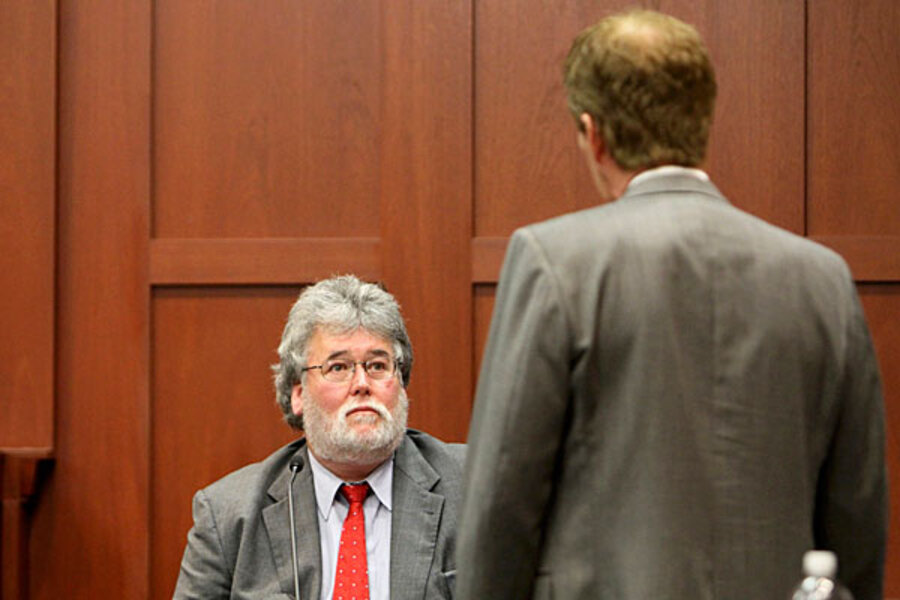At the hearing, O’Mara attacked the affidavit in an effort to raise doubts about Zimmerman's guilt and persuade the judge to establish a reasonable bond. He called attention to claims in the affidavit that Zimmerman “profiled” and “confronted” Martin – assertions that O’Mara said lacked hard evidence.
For one, O’Mara said that Zimmerman sustained several lacerations and a broken nose – undermining the affidavit and suggesting that Zimmerman was telling the truth when he said he feared for his life.
Zimmerman’s father, Robert Zimmerman, testified via telephone, describing his son's injuries the day after the shooting: “Well, his face was swollen quite a bit, he had a protective cover over his nose, his lip was swollen and cut, and there were two vertical gashes on the back of his head.”
In an attempt to further attack the claims made in the affidavit, O'Mara called to the stand Dale Gilbreath, one of the lead investigators. Mr. Gilbreath acknowledged that there was no evidence to indicate who started a fight that happened after Zimmerman got out of his car and, at one point, ran after Trayvon.
"Do you know who started the fight?" O’Mara asked him.
"Do I know? No," said Gilbreath, who added that he had not come to the hearing prepared to testify.
"Do you have any evidence that supports who may have started the fight?"
“No.”
“The evidence that I found out, I found out in the courtroom today,” O’Mara said to reporters after the hearing. “I made the decision to review the probable cause affidavit to fill in gaps that we knew existed and expand it to include things like injuries, where those injuries now seem not open for contest. So that may lead us down a certain path. There are a lot of questions about this case, not just of guilt, but what really happened.”
Prosecutors say they have evidence, including eyewitness accounts, that suggest Zimmerman chased Trayvon, who at one point turned around and attacked Zimmerman in self-defense 70 yards from the back door of the house where he was staying with his dad, and where he was returning after buying a bag of Skittles and an iced tea at a convenience store.
“The facts are that here’s a 17-year-old young man who was minding his own business and was walking home when confronted by the defendant, who felt that Mr. Martin was committing some type of crime. Unfortunately, he made the wrong assumption, that’s why the word 'profile' was used, and he 'confronted' Martin,” said Bernie De La Rionda, the state prosecutor, in a closing argument where he suggested the judge set a $1 million bond.






